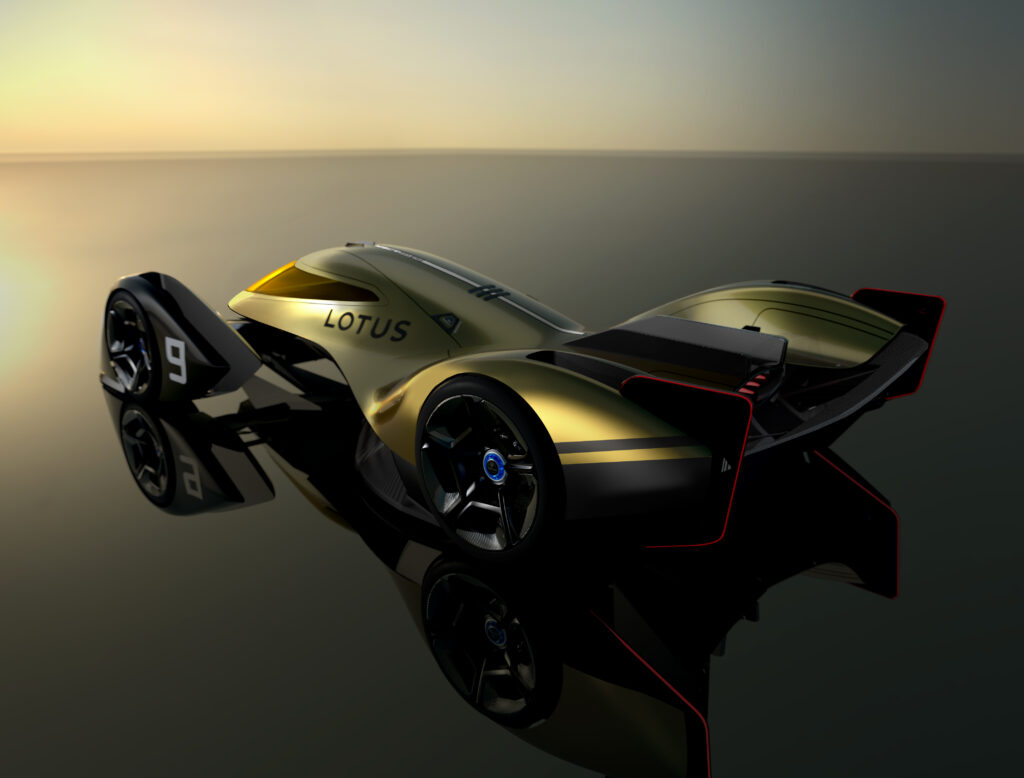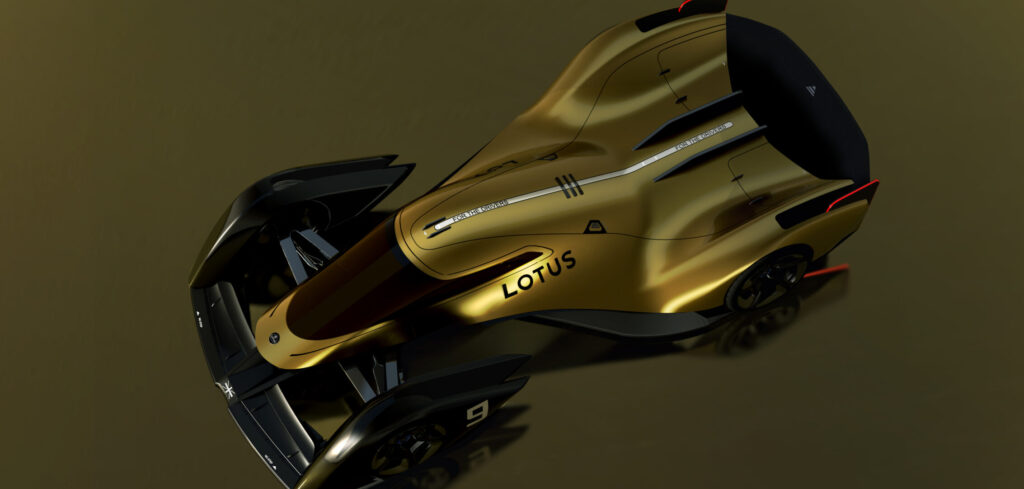Lotus has unveiled the E-R9, a design study for what it envisages as a next-generation pure electric endurance racer, which it says could be on the starting grid of circuits around the world for the 2030 season.
It has been developed by Lotus Engineering as a technology showcase of its philosophy and capabilities in the fields of advanced electrified powertrains and aerodynamics.
According to Lotus, E-R stands for Endurance Racer, while 9 is the car’s competition number, chosen in tribute to Lotus’s racing past. It was in a Lotus Mark IX that the race team made its debut appearance at the Le Mans 24 Hours, with company founder Colin Chapman among the drivers competing. The year was 1955, meaning the E-R9 race car concept – if raced in 2030 – would be in celebration of the Mark IX’s 75th anniversary.
The E-R9 was developed by the engineering team of Richard Hill, chief aerodynamicist at Lotus, and Louis Kerr, principal platform engineer on the Lotus Evija pure electric hypercar as well as technical director, GT, Geely Group Motorsports International. Visually it was brought to life by the Lotus Design team, led by Russell Carr, design director for Lotus.
Hill commented, “What we’ve tried to do is to push the boundaries of where we are technically today and extrapolate into the future. The Lotus E-R9 incorporates technologies which we fully expect to develop and be practical. Lotus has an amazing history of developing unique solutions, and we’ve done it many times in motorsport and with our road cars.”
Chief among the car’s aero innovations are morphing body panels. Located across the delta-wing profile, these change their shape and attitude to the air flow to reduce drag on the straights and generate maximum downforce in the corners. How exactly these panels are activated, or what materials would be used in their construction, has yet to be revealed.
The company says the drivetrain would be a development of that found in the Evija hypercar, using individual motors to drive each wheel and utilizing a torque-vectoring system to enhance mechanical grip.
Kerr explained, “Battery energy density and power density are developing significantly year on year. Before 2030, we’ll have mixed cell chemistry batteries that give the best of both worlds, as well as the ability to ‘hot-swap’ batteries during pitstops.”




